
Program Manager, HT Institute
2023 Summer Newsletter
Horticultural Therapy is making an impact on people’s lives.
Read more about how it’s happening.
HTI Director’s Note: Reap and Record
By Rebecca Haller, HTM

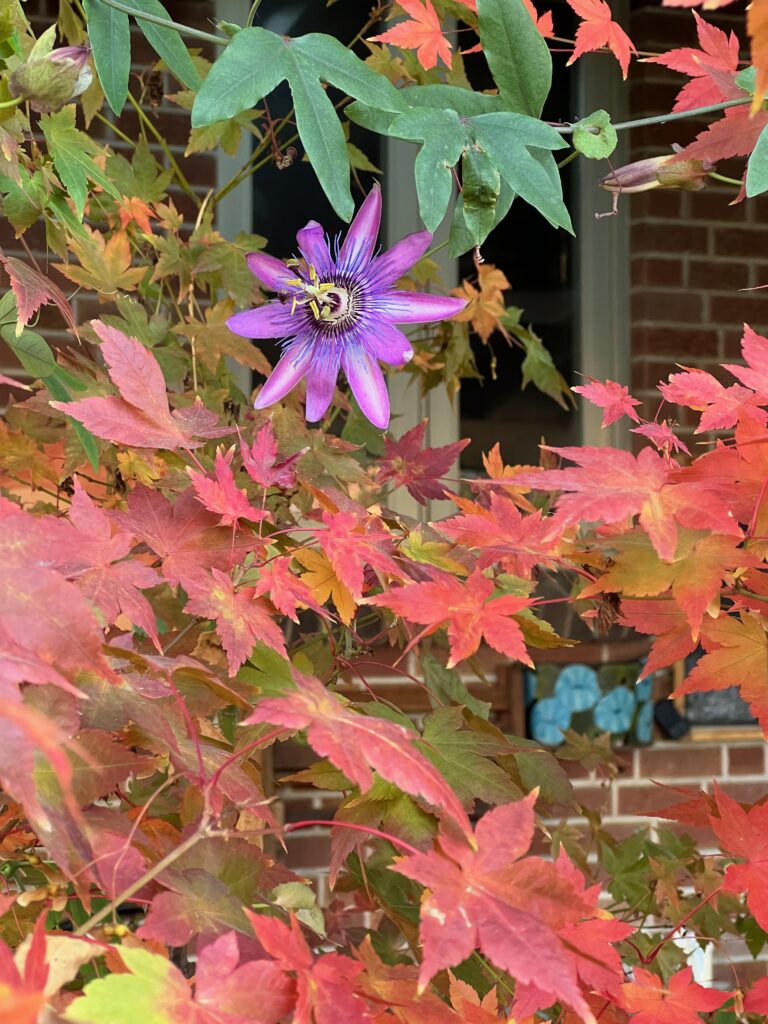
Fall is a great time to pause in the garden to enjoy its bounty (although honestly, I think this is a good practice in any season). Shorter daylengths and cooler temperatures generally lead to reduced demands of garden care with prolonged produce and flowers. Take time to enjoy it.
Garden activities include gathering, extending the growing season, and putting in garlic, spring-flowering bulbs, and cover crops. To ripen fruiting veggies as frost looms, remove the newer flowers so the plants have enough energy to send to the partially ripe tomatoes, peppers, cucumbers, etc. Keep up with deadheading flowering plants. Cut plants for indoor floral displays and dry flowers, seed pods, and grasses for everlasting arrangements.
Virtually any color combinations seem welcome in autumn. We appreciate them more as summer wanes. If you have included woody plants with fall leaf color or seed pods in the therapy garden, they lend themselves to close observation, and plenty of genuine activity for horticultural therapy sessions. Collect and shred the leaves of deciduous trees for composting. I have found that it is very useful to store some dry shredded leaves to have a stock of brown matter to combine with green plant materials for composting until the leaves fall again the next year. Combined with cool season veggies and flowers, the season is far from over this time of year.
Take care of business now as well. Record harvests. Trace and report spending and income. Take stock of the personal gains of program participants. Publish or share photos of the richness of people and plants in your garden. Pause to write about these.
And notice the unique fragrances of fall.
Program Profile: The Power of Connecting-
Beginning a Career in Horticultural Therapy
By Gina Walter, education and volunteer coordinator, Pittsburgh Botanic Garden
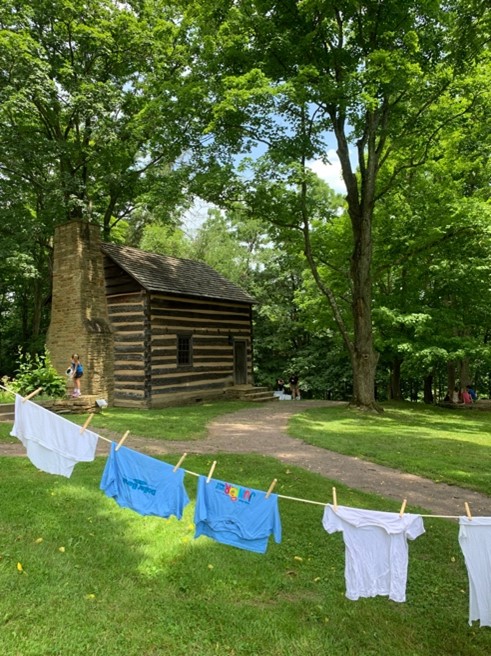
Pittsburgh Botanic Garden is nestled in the small town of Oakdale, located southwest of downtown Pittsburgh. Though the Garden is only eight years old, it is rich in history (having once been a coal mine), supports 460 acres of beautiful land, and is becoming a new community staple in Pittsburgh. And with the Garden’s efforts to develop a therapeutic horticulture program, it will likely continue to stand out in the world of public gardens.
Power of Connecting
I began my position as the education & volunteer coordinator at Pittsburgh Botanic Garden in January of 2023, soon after receiving my certificate in horticultural therapy from HTI in October of 2022. I plan and lead children’s educational programs and manage volunteers. However, my role at the Garden is evolving, as we develop a therapeutic horticulture pilot program, hopefully starting in Spring of 2024. It is amazing to look back at the beginning of my horticultural therapy journey and compare it to where I am now, thanks to the horticultural therapy classes and the power of connecting.
My career in public gardens, education, and now therapeutic horticulture truly began when I emailed the education director at Pittsburgh Botanic Garden. For my final HTI assignment, I wanted to write my program proposal for the Garden because it seemed like a prime location for therapeutic horticulture, and I would be relocating to Pittsburgh in a few months. However, having never actually been to the Garden, I had a lot of unanswered questions that only someone who worked at the Garden would have the answers to. I composed an email to the director of education, introducing myself and explaining what horticultural therapy was and the project I was working on, followed by basic questions. I wasn’t expecting much, if any, of a response, but thought it didn’t hurt to try, so I sent the email. To my surprise, I received a response ten minutes later that read, “we as a garden have been exploring ways to offer horticultural therapy programming. We were part of a grant consortium that unfortunately did not get funding; however, we’re continuing to look for other avenues. I’d be happy to answer questions.” I was shocked – not only did I receive an answer, but the staff already knew what horticultural therapy was, had made efforts to incorporate it into the Garden, and were looking for new ways to successfully do so.
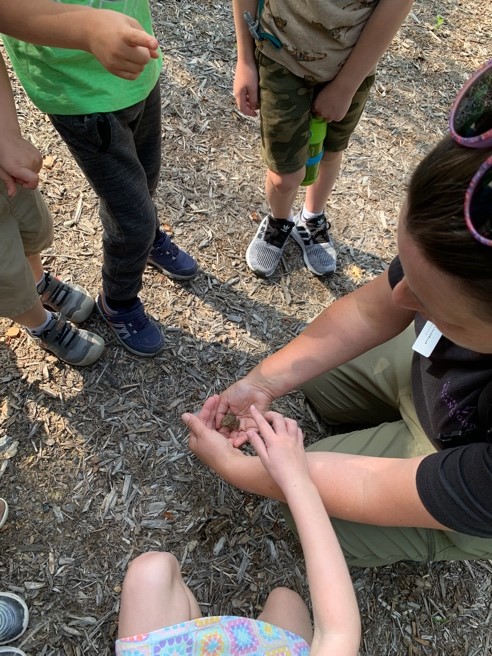
Pilot Program Begins
We emailed back and forth, I got my questions answered, wrote my proposal, and was planning to send the final draft to the Garden staff in hopes it would interest them. Before I could do so, the Garden posted a job opening for Education & Volunteer Coordinator. Moving to Pittsburgh the next month and looking for a job in outdoor education, I knew I had to apply. Having built a connection with the education director over horticultural therapy, I emailed him and let him know I was applying. He asked that I send my resume to him and shortly after we scheduled the interview. In addition to discussing the roles of the education & volunteer coordinator during the interview, we spoke about the opportunity to work together to start a therapeutic horticulture program at the Garden. I received the job offer after Thanksgiving and began my position in January. We are now making strides towards beginning a therapeutic horticulture program, starting with a pilot program.
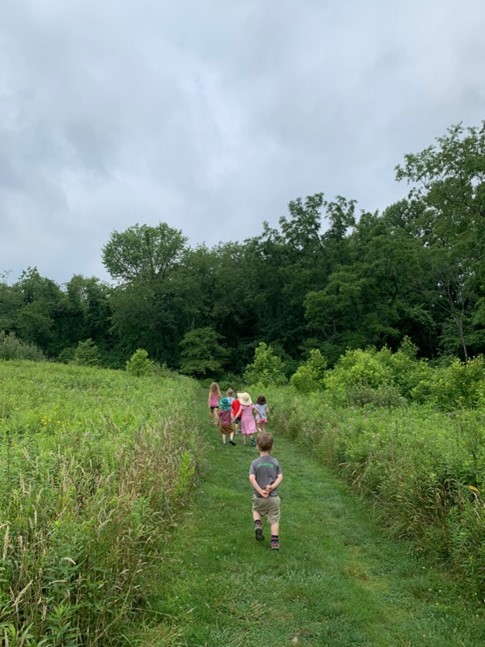
With the support of Garden staff, I am planning and leading two introductory therapeutic horticulture lectures and demonstrations for the public as well as possible organizational partners. The goal is to find individuals or groups interested in participating in our pilot program, which will include five, two-hour long sessions spread over the course of five weeks at the botanic garden. Our pilot program will be wellness focused and will test how therapeutic horticulture fits into the Garden. After the pilot program, we hope to incorporate regular therapeutic horticulture programming into the Garden and eventually be a leader for therapeutic horticulture/horticultural therapy in Western Pennsylvania.
At the beginning of my horticultural therapy journey, I had no idea where it would take me or what I was doing. Making a career shift into a world that I had little connection to felt overwhelming and scary at times, especially when job postings for horticultural therapists were few and far between. However, the passion I saw in myself, and others made me realize that this is a worthwhile practice, empowering me to continue on and keep an open mind. My story is just one example of how to get started in a horticultural therapy career and a prime example of how your first opportunity may not be explicitly horticultural therapy, but rather a steppingstone. But if there is one thing that can be said for everyone, it’s to take chances and send that email, because you never know what could be waiting for you on the other side.
Gina is the education & volunteer coordinator at the Pittsburg Botanic Garden and a graduate of HTI.
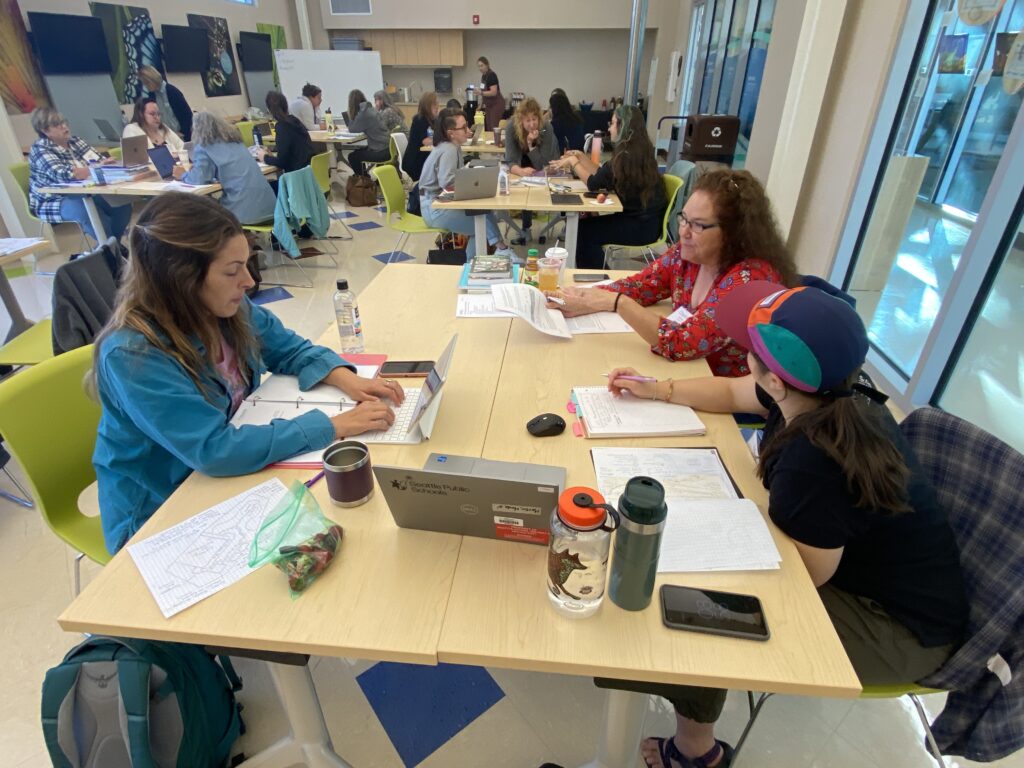
Graduations and New Beginnings
HTI congratulated 38 graduates this fall, all completing their certificate in horticultural therapy. Many joined the in-person class in Fort Collins, CO and Cheyenne, WY with the opportunity to explore several outstanding gardens. In addition, all new Fundamentals of Horticultural Therapy, classes filled for the fall with a nice group of 37 students attending the face-to-face class at the Coastal Maine Botanical Gardens in Boothbay, Maine. New Fundamentals of HT dates for the fall of 2024 will be posted by the end of the year. The 2024 schedule of classes including, HT Techniques, HT Programming and HT Management are on the website at the HT Institute. The Institute is proud to be training leaders in the field of horticultural therapy and excited to see new programs around the country.
Tips for Practice: Embracing Growth
By Jeanne Schultz, M.Ed., CARES, Skyland Trail and 12 Acre Farms, LLC
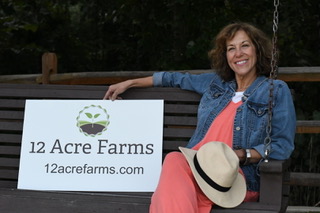
Roots
My son and I have a lot in common. We both have brown hair, mine with a lot more gray, friendly smiles, a love of adventure and the outdoors, and a propensity towards depression. For the last 15 years between the two of us, we have battled codependency, disordered eating, substance misuse, alcoholism, and related mental illnesses. Curiosity and thrill-seeking have evolved into a new career for me and a fascinating hobby for Josh. This growth process has been challenging but it has forged our inner strength, stability, and spiritual growth. Today, Josh is an avid outdoorsman. He enjoys exploring and mapping caves and I enjoy teaching others about gardening and designing outdoor spaces for tranquility and enjoyment. Today, Josh and I have a strong relationship and are both in long-term recovery. Nature has helped us to explore and maintain our new ways of life. We are fortunate. It didn’t start out that way. My hope is that explaining where this adventure began may help others. As nature constantly changes, so can peoples’ lives.

Stem
I began exploring horticultural therapy three years ago after completing a course of study in recovery coaching. I had discovered gardening as a new sober habit, one that I had enjoyed as a child. I liked that it would make me physically tired, grant peace of mind, increase my ability to be present and fulfill a life-long interest in creating outdoor art. I was so enamored with the field I began thinking about ways to bring it to others. In the summer of 2020, my husband and I created 12 Acre Farms Services LLC, with the intention of utilizing plants and plant-based activities to encourage personal growth in others. Coincidently, it was at about this time that I was introduced to Libba Shortridge, HTR a horticultural therapist at Skyland Trail, a mental health treatment organization for adolescents and adults. I soon began volunteering with Libba and about a year later was hired as a horticultural therapy specialist.
Branching Out
Leaves take in sunlight for photosynthesis and growth, below are lessons I’ve learned since earning my certificate from the Horticultural Therapy Institute (HTI) and working in the field the past three years.
There are some misconceptions about horticultural therapy. It sounds cool but often people don’t understand what we do. Sharing about the hypothesis of biophilia lends weight but then we often must explain that too. Many people can relate to positive experiences outdoors among trees and in gardens but may still ask, “Do you help plants with low self-esteem?”
Medical professionals believe we are in a mental health crisis. Therapists are difficult to find. Post-pandemic insurance coverage is changing. Many people want to learn how to deal with
depression, loneliness and managing anxiety and they are uncertain how horticultural therapy can help them cope with these conditions. That’s where our creative and consistent programming can come into play. Documenting mood and feelings before and after sessions can lend credibility to our work. Through these experiences, clients can learn to practice mindfulness and relaxation on their own. Self-care skills can grow under the right conditions.
I was fortunate to be able to attend the American Horticultural Therapy Association’s (AHTA) conference in 2022. The meeting helped me to grow professionally and personally. Networking helps us connect and encourage each other. While social media is full of upbeat, insightful, and inspirational articles, I prefer in-person conversations and meetings. As companion plants aid each other, connecting with clients and other therapists can be nurturing and allows for a beneficial exchange of energy. Technology can play an important role in this exchange but there is something special about spending time with others in person.
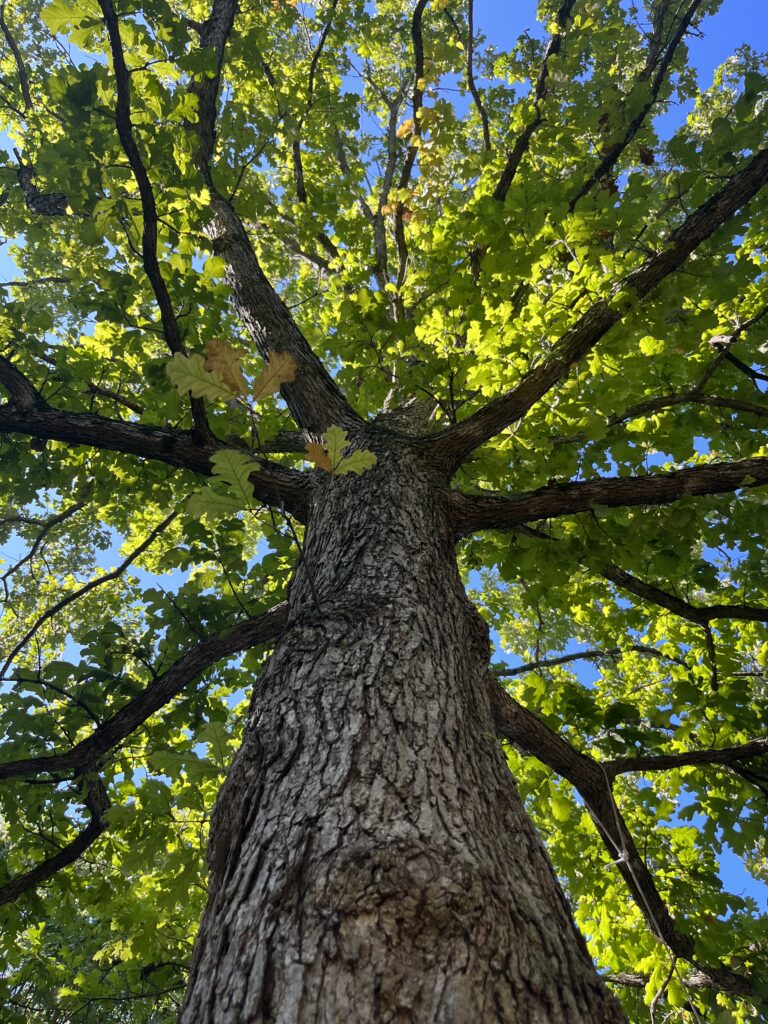
Maintaining a Well-Stocked Vehicle
Those of us working at various sites understand the importance of maintaining a well-stocked vehicle. For me that means kid-friendly watering cans, bags of soil that I can easily carry to job sites and a variety of tools. I’ve also learned to allow extra time to pack and unpack my car when working with clients. It often takes longer than you think and can affect how you bill your time.
I’m usually hired on a contract basis, so I don’t see groups daily or weekly. That’s why it’s important for me to photograph completed projects before I leave a location. The client may also need pictures for their website, socials and to justify why their board of directors needs to renew your contract. Returning, (especially after a rainstorm!) won’t offer the same opportunities for documentation.
The Harvest
When I started this journey, I had no idea what I didn’t know. I knew nature had helped me feel better, but I wasn’t sure how to grow a business or what tools were needed most. I’m still learning and growing and hope that process will continue for a long time.
Correcting misconceptions about horticultural therapy is up to us. I’m hopeful as the field grows so will the public’s awareness of the positive effects and cost-effectiveness of our craft. Our research studies will continue to challenge our practices and help us determine how best to serve clients.
There’s comfort in the predictability of the seasons. It has been fun to reflect on my growth in the field. I’ve been fortunate to have met many talented professionals and am grateful for their generosity in sharing their time, ideas, plants, and seeds. It’s inspiring to learn how colleagues are creating new ways to help others, working with diverse populations, in a variety of settings and forming innovative, professional networks such as Root in Nature’s GrowTH Community. I encourage everyone to collaborate and reach out to one another for support.
Horticultural therapy like recovery can be full of surprises, both are paths well-worth taking.
Jeanne is the horticultural therapy specialist at Skyland Trail and an HTI graduate
HTI Kudos
Two HTI Students Land New Positions
Congratulations to Mattie Cryer, a recent 2022 graduate of the HTI certificate program for landing a new HT position. “I am overjoyed to be joining the Craig Hospital team in the therapeutic recreation department as their Horticultural Therapist. After working for the City of Denver as a social worker in the Unaccompanied Refugee Minor program during my time as a student at HTI, being able to dedicate myself full-time to another helping profession utilizing horticultural therapy is a dream. The hospital’s horticultural therapy program is well-established and was built by Susie Hall, HTR for the past 40 years. Craig is a neurorehabilitation and research hospital for brain injury and spinal cord injury patients that utilizes creative and holistic therapies to help patients in their recovery journey. I am honored to take over the program and be the person who brings horticulture and plants into the healing process for patients.”

Also, a shout out to Garron Dorr, HTR, a newly registered horticultural therapist as of spring 2023, an active member of AHTA, and is currently applying his skills and knowledge of plant and human sciences by facilitating client-centered services and therapeutic programming at Coastal Maine Botanical Gardens. Having earned a bachelor’s degree in communication, and more recently an associate degree in horticulture while attending the Horticultural Therapy Institute, these disciplines provide a backdrop when creating enriched programming for a plethora of populations with a wide variety of abilities. In addition to assisting in a highly developed HT program that has a strong and comprehensive understanding of horticultural therapy in an active public garden environment, he also oversees and maintains associated gardens on the CMBG campus. He looks forward to providing, developing, and advancing the growth of year-round, therapeutic program development and research in the public garden arena, as well as an exceptional training curriculum for future HT internship opportunities.
Sowing Squash and Self Esteem
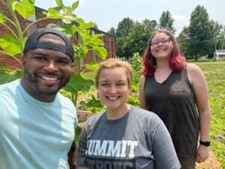
Sprouting Minds, an Ohio-based nonprofit organization founded by HTI graduate Jordan Payne, promotes mental health and resilience through therapeutic horticulture. Sprouting Minds builds resilience factors into its therapeutic work. Those factors include healthy relationships; giving power back to participants; self-esteem; external support for coping with stress and adversity; and affiliation, or a common objective to which to work toward. He is currently offering programming at Summit Academy School for Alternative Learners in Middletown. Through Paynes direction and therapeutic gardening, the school’s entire K-6 student body is learning to work as a team, setting goals and taking on new responsibilities. This is the section year the school has engaged in the program.






